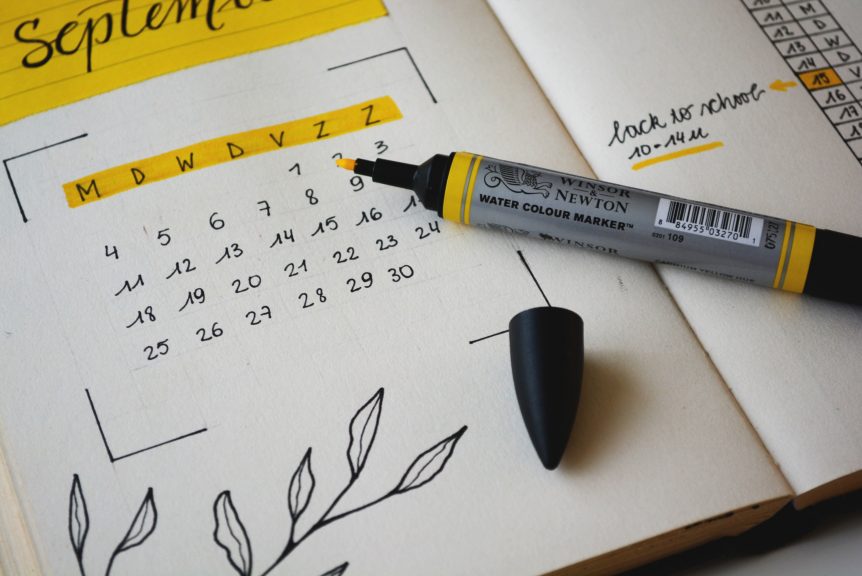What does your world look like if you have time to learn?
Picture it in your mind.
There’s a gap between where you are today and where you’d like to be tomorrow.
What’s contributing to the gap?
The gap exists for only 2 reasons:
- You can’t find the time.
- You found the time, but something else is standing in your way of learning something new.
We’ll cover #1 in this article and address #2 in a later article.
So you can’t find the time.
Maybe you have other things filling your day. What are those things? Can you list them?
For example, my day used to look something like this:
- Wake up to my morning alarm for work.
- Get dressed.
- Rush through breakfast.
- Grab my backpack.
- Drive 30 minutes to work.
- Work.
- Play table tennis with coworkers.
- Drive 30 minutes to get home.
- Put away backpack.
- Eat dinner.
- Browse the Internet.
- Do some errands.
- Drink beer or wine.
- Watch a movie or show.
- Go to sleep.
Your list will look different. The important thing is that the list captures your day.
Before diving deep into finding time, convince yourself of the 3 basic truths when you don’t have enough time:
I don’t have enough time to learn everything I want. What should I do?
Hopefully, you’re now convinced that you have a choice, you have the time and that you must choose (otherwise someone else chooses for you).
And now, getting back to that list of things that fill your day…
There’re only 2 ways to deal with them:
- Don’t do them.
- Do them.
Omit it.
Deciding not to do something is the most straight-forward way of freeing up time.
For example, #12 on my list is “Do some errands.” If the errands aren’t urgent, I can choose to omit it.
If you decide to omit a to-do, make sure you can live with the consequences and that it won’t take up more of your time to fix it later.
For example, if my errand was to pick up some desserts for a work party the next day, then I’ve either let down my team and will need to apologize, or I’ll be rushing to get desserts tomorrow morning.
If you decide that something does need to be done, there’re only 2 ways to handle this:
- Someone else does it.
- You do it.
Using the same errands example, I could do it myself (second way). Or I could try the first way by ordering it ahead of time and having the bakery deliver the desserts to work in the morning. I could also ask a coworker to pick up the desserts instead.
Outsource it.
If someone else does it, keep in mind there’s always overhead when you outsource something to someone else.
In other words, you’ll need to invest time to instruct them on what to do, help them troubleshoot issues, review their work, etc.
But don’t let this overhead deter you, as outsourcing a recurring and tedious task can potentially save you lots of time.
If you’ve decided that you must do it yourself, there’re only 3 ways to handle to-dos:
- Do it now.
- Do it later.
- Orchestrate it.
Doing the to-do now doesn’t save you any time.
Interestingly, doing it later also doesn’t save you any time. While you may have some more time now, you’ll eventually need to take care of the to-do in the future, which doesn’t save you any time.
Orchestrate it.
The only remaining option is to orchestrate the to-do. Orchestrating a to-do means automating and sequencing it.
Some to-dos cannot be automated (e.g. one-off tasks), but many more can be automated than you think.
Automating a to-do means clearly defining the steps for doing the to-do, so that you’ll save some time the next time you do it.
For example, if picking up treats is something I frequently do for my team, I can write myself a quick note to orchestrate the task. Besides defining the step (preorder desserts on the app), I can also specify other useful info such as the pickup time, dessert quantity, ingredients to avoid (in case anyone is allergic), name and number of the coworker who will be picking up the order, and the bakery’s hours.
Here’s a sample note that shouldn’t take more than a minute to jot down:
Pickup desserts
- Call Chris (555-123-4567) to see if a 9am pickup time works for her.
- Use App to order 2 dozen donuts.
- Set pickup time for 9am (bakery opens at 6:30am).
- Forward the email order to Mary for pickup.
I've just orchestrated my to-do!
To orchestrate a to-do:
- Write down the steps.
- Include any pertinent details to streamline the task next time.
- If it’s something you can get a computer to do, why not write a small script to completely automate it?
- The next time you need to do the task, make sure to go through your note/checklist first.
In summary…
In order to get to a place where you have time to learn, you must:
- Convince yourself of the 3 basic truths.
- Find time by omitting the to-do (not gonna do it!).
- Find time by outsourcing the to-do (someone else is gonna do it).
- Find time by orchestrating the to-do (automate it).

